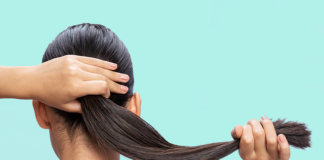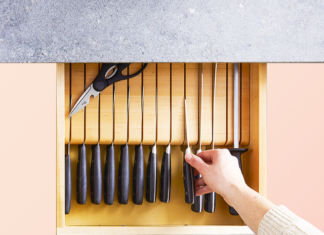
Tiles belong in the bathroom and carpets belong in the bedroom, right?
Well yes and no. If you want a tiled bedroom floor, there’s nothing to stop you from having one. If you want a carpet in the bathroom, then why not? You just need to be sure that whichever material you choose meets your own personal needs and wants
By the same token it is certainly true that many, if not most people prefer carpeted bedroom floors and bathroom floors that are tiled.
While the pros and cons of installing carpet in the bathroom are fairly varied, the main question you need to ask yourself is, “Why would you want a carpet in your bathroom?” And then, “Why would you NOT want a carpet in your bathroom?” If you decide you do like the idea of a bathroom carpet, what options are there, and how do you make the right choice for your home?
Some Pros of Bathroom Carpets (along with Some Cons)
Warmth must rate as number one in terms of obvious pros for a bathroom carpet. After all it’s bad enough to get out of bed and have to trundle through to the bathroom over a cold floor (although you could give slippers a try); but to have a lovely hot, steamy bath and THEN get out onto a cold floor is another story. Just be aware that some bathroom carpets are warmer than others, particularly shaggy rags and those with a nice thick pile.
Another pro is that a carpet specially made for the bathroom will prevent you from slipping on what can quickly become a slippery floor underfoot – provided, of course it has a non-slip backing.
Other pros are that a carpet intended for a bathroom will also stay odorless even if wet, and it will therefore protect you against bad smalls that might emanate from a carpet not intended for use in a damp environment. It should also protect you against bacteria (which can easily make you sick) that forms so easily in a damp, warm environment.
Of course if you don’t have a bathroom carpet, all you need to do is mop the tiles and keep them clean. Carpets or no carpets, if you don’t mop up and maintain a certain dryness, you’re likely to get the same smells and mold (which often couples up with bacteria) forming in corners and in any crevices.
A soft fluffy carpet underfoot in a bathroom usually looks good – well, as long as it isn’t wet and straggly. And it can add a touch of style to a bathroom too, but mostly when the bathroom is larger than average. In smaller bathrooms it is usually best to stick to bath mats, the type made specifically for bathrooms. While not particularly stylish, they do, at least, fulfill a function.
The Cons of Bathroom Carpets
The wet factor probably ranks number one on this side, especially since damp promotes mold and then leads to a fairly rapid deterioration of any “soft” furnishings. Humidity and steam are other no-nos. If, for instance, you were to fit a regular wall-to-wall carpet in your bathroom, you’d be in for a bit of a shock. It would probably be wet and rotting within months, maybe even within weeks.
Types of Bathroom Carpets
Contemporary bathroom carpets are no longer limited to small bathroom mats that are often sold in sets together with a toilet-seat cover and shaped mat intended for use at the base of the loo (although these are still available). They are also (well usually) a far cry from tacky 1970s-style carpets that were so often used in the bathroom.
Carpets manufactured specifically for use in the bathroom are usually washable, and they may be water-resistant, even “waterproof” (usually meaning that they have a waterproof backing, latex for example). Types include:
- waterproof waffle-backed carpets,
- twist pile carpets that are manufactured on a roll so that they may be cut to size, to fit any length bathroom,
- easy-to-wash nylon and plush-pile carpeting that can be cut to size and laid so that it looks as if it is fitted wall-to-wall,
- cotton candlewick rugs,
- exotic Indian rugs made using cotton, silk and other yarns, some of which are reversible – specifically manufactured and marketed for bathroom use.
What to Look For in a Bathroom Carpet
First step is to decide how much carpet you want in your bathroom. For example you might be able to use a rug on top of a tiled surface without it becoming damp or smelly. Alternatively you may prefer the idea of a bathroom carpet that is laid loose, but wall-to-wall.
Then you need to make sure that the carpet won’t slip. Nothing you say or do will make this room any less damp than it is; and anything that comes into contact with water is potentially slippery… and therefore potentially dangerous.
Thirdly, make sure you can keep the carpet clean and healthy. This generally means you need to be able to stick it in the washing machine whenever necessary. If it isn’t easy to keep clean, there’s a 100% chance it’s going to pick up moldy odors pretty quickly.
Generally the most suitable bathroom carpets are those made from natural materials, including cotton and wool. However some synthetics, including nylon, dry a little quicker.
Some More Specific Bathroom Carpets
Flor (www.flor.com) is just one company that is making carpets suitable for use in bathrooms. Currently they boast eight types that they recommend. All are rugs and runners which can be lifted so you can air them when they get damp (or worse still wet!).
Then there’s the Home Decorators Collection (www.homedecorators.com) that boasts plain and patterned bathroom rugs, some of which have a wonderfully Oriental appeal, and others that contemporary and even some that boast abstract patterns and gorgeous colors. Materials range from natural jute to wool.
Sure the choice is not as vast as it is for other rooms in the house, but if you really want a bathroom carpet, you are very likely to find something suitable.








































